Andrew E. Barrett asked: "Robert Pinsker can you enlighten us as to the grid used in arranging this 1918 Artempo roll? Is it like 8 steps per beat, or what? How many punches are used for the on-beat 'eighth notes' (longer) and how many for the off-beat 'eighth notes' (shorter)?"
Ok, this is a very good question which can be addressed without having an original copy of the roll to look at, because of the excellent set of roll scans that Dr. Frank Himpsl provided to AMICA members, a wonderful contribution to the hobby for sure, on that we can absolutely all agree! I have had another look at the Artempo Carolina Shout roll, making a detailed look at the timing, from which we can surmise the type of arrangement that it is. (I was shown how to do this by George Bogatko many years ago, when he very kindly hosted my visit to his home.)
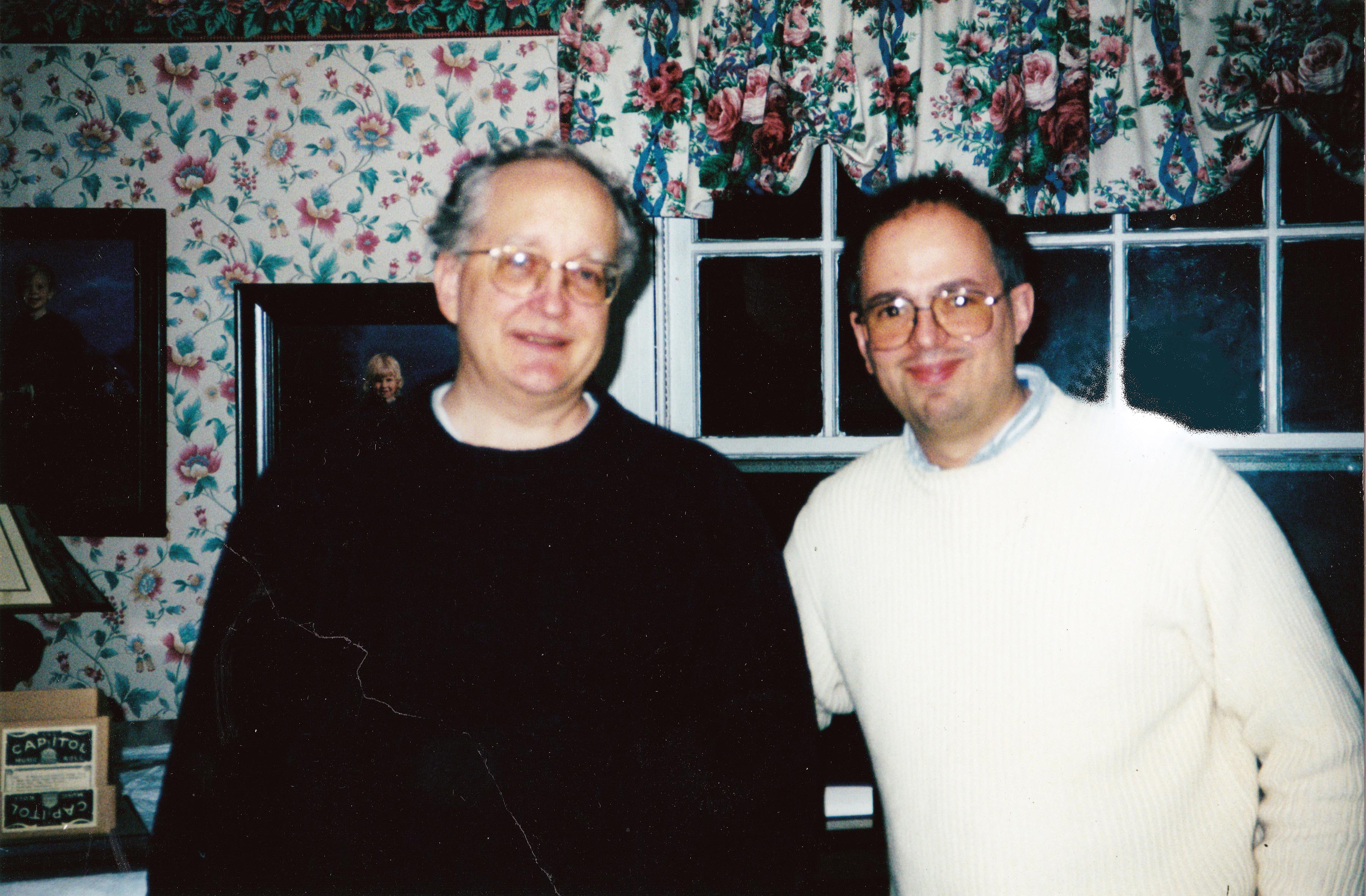
The key is to look for triplets in the arrangement, because if there are any, one can look at whether the timing is exactly even - if so, has to be a multiple of 3 rows per quarter note, obviously. If there are 8 advances per quarter note, the triplet cannot be exactly even. In this case, I looked at a measure and a half from the A strain, and then stretched the section so that the beginning and end of the section was aligned with the beat. In the Piano Roll view in Cakewalk, the bit looks like this:
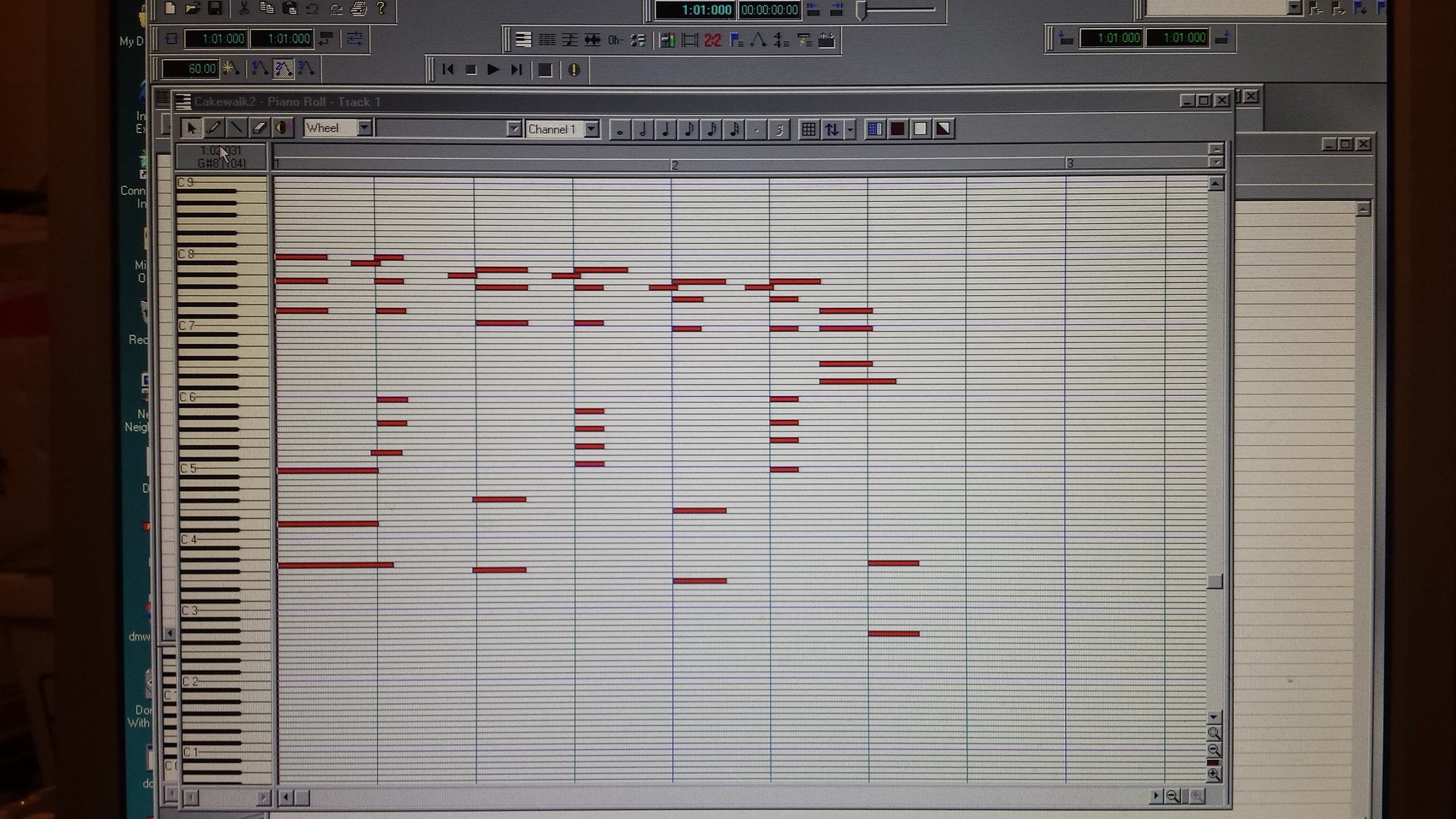
The Event List representation of the same bit looks like this:
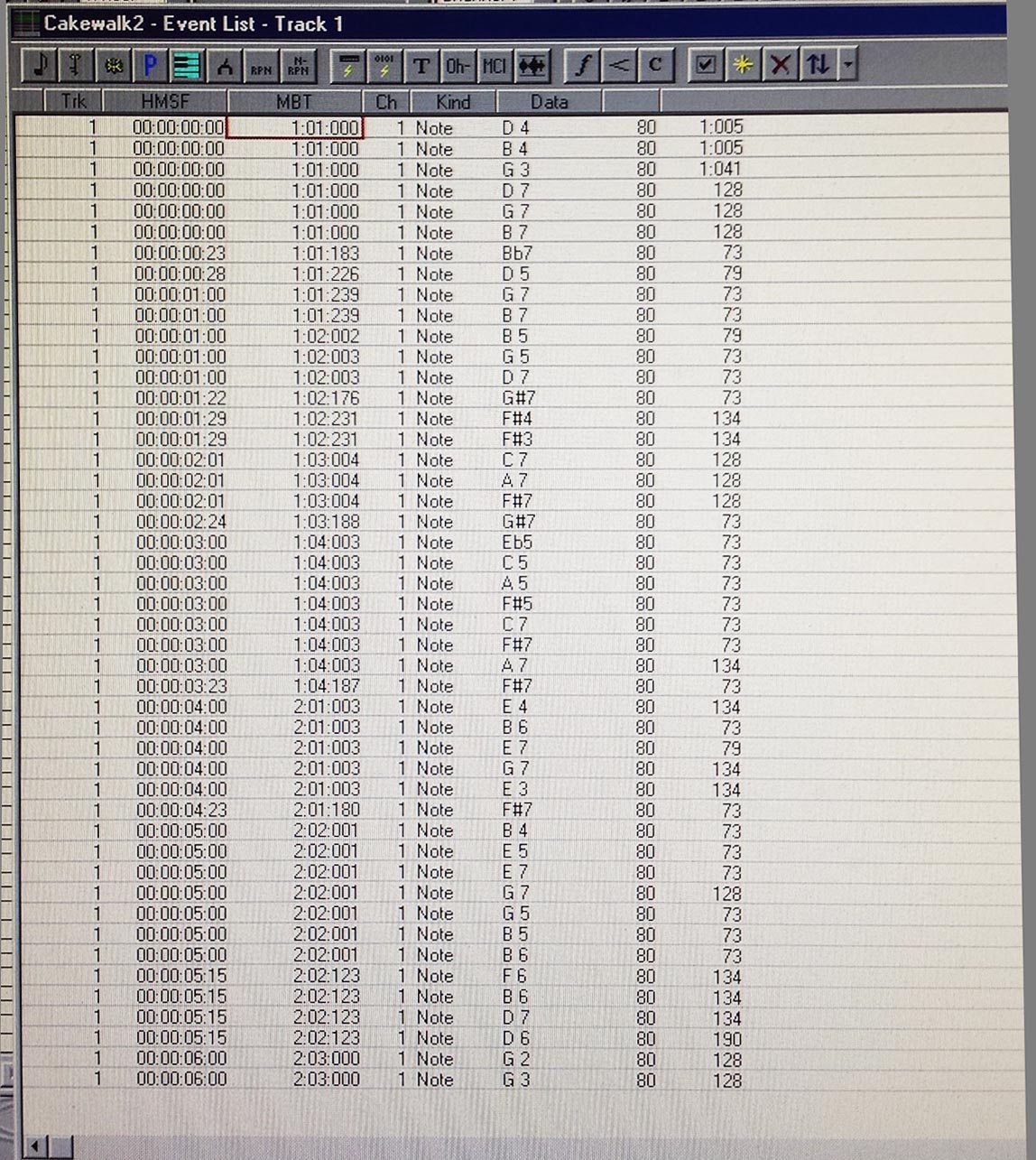
Now, one can just look at the dotted-eighth-sixteenth pattern in the treble in the piano roll view and easily see that the arrangement indeed is exactly dotted-eighths and sixteenths, not 'triplet swung' at all, and it's easy to hear that, as you have, Andrew. But we don't have to just estimate - look at the event timings in the event list and you will see that the sixteenths fall very close to starting 180 ticks after the start of the beat, when I have chosen 240 ticks per quarter note, so that the note falls 180/240 = 3/4 of the way through the quarter, i.e. as actually a sixteenth note. The syncopation in the right hand just before the last bass octave falls almost precisely halfway through that quarter note, an even eighth (not swung).
That itself is certainly too short an excerpt to be statistically significant, but if you listen to the whole thing, and I've similarly analyzed a number of chunks a few measures long, you can search for the shortest time intervals between notes in the whole arrangement. The conclusion is that there appear to be no increments definitely smaller than 60 ticks out of 240 ticks per quarter note, that is, nothing finer than 1/4 of a quarter note = a sixteenth note. I have not been able to find any increment of 80 ticks, which is what you'd need to be able to render a division of the beat into even triplets or triplet-swung eighths. Here is a bit with the most rapid note changes in the roll. You can see that chromatic descent in the right hand divides the quarter into 4 parts, i.e. sixteenths.
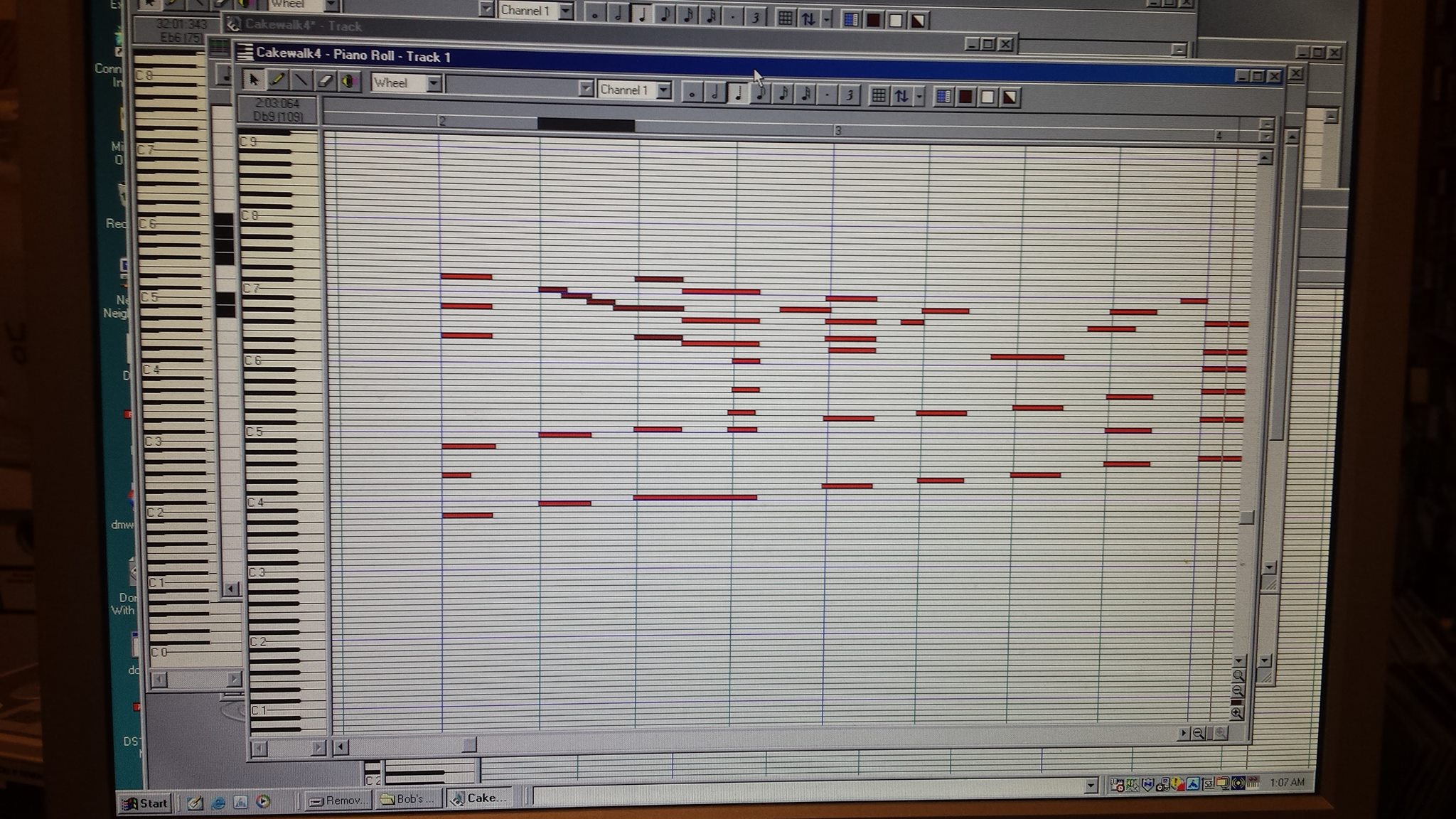
We can conclude pretty firmly from this that the Artempo Carolina Shout roll is arranged with 8 advances per half note, not the standard QRS (or Imperial pre-purchase by QRS) 24 per half note, at 50 thousandths of an inch per advance, or 48 per measure. I cannot tell what the absolute punch advance is on the Artempo roll without seeing the original or getting access to the scan file, but knowing that the arrangement is 16 advances per beat, we could tell what the advance is if we knew what the paper speed was (the marked 'Tempo') and synchronizing with a metronome. I guess I could make a guess if I assume that the BluesTone recut overlays the original, which I bet it does.
But anyway, this does explain why the roll sounds a little strange when we're used to hearing all later versions played by JPJ on record or on the radio. In Johnson's live performances, it's definitely always swung at an amount that is closer to triplet swing (2:1) the more slowly he plays it. (Like so many examples, it always seems when a virtuoso plays a piece many times over the course of his or her career, there seems to be a tendency to always play it a little faster as the years go by.) At faster tempos, the swing is less than 2:1. But in no case did JPJ ever record it at anything like 3:1 (dotted-eighth/sixteenths as it sounds on the 1918 roll. But if the arrangement is 16 advances per measure, it's impossible to make it 'swing' at less than 3:1.
So the two theories are: (1) that JPJ's style changed very significantly with regard to basic rhythmic feel between 1918 and 1921, and the Artempo arrangers/editors could justify using only 16 advances per measure because that accurately represented the way JPJ played the piece in 1918 (which also happened to save them some money on paper, too, if you were to use the low paper speed that you would need to make a course arrangement like that come out at the right tempo) OR (2) JPJ's rhythmic feel did not change that suddenly in that three year period. If the latter hypothesis is correct, it makes sense that he might not have been very happy with how that 1918 roll sounded so that he would want to record the piece again in his first session for QRS in 1921, after they assured him that they would arrange it in such a way that it would sound smoother and more like he actually played it. We don't know who was responsible for editing that arrangement (that is, who laid out the precise arrangement based on the recording piano output - as described eloquently by Art Reblitz just lately), but we might guess maybe it was Kortlander himself. As Frank says, this was before they brought in J. Lawrence Cook to QRS as a full-time employee (that was in 1923).
Another aspect that hasn't been explicitly mentioned in this discussion is the way the 'call-and-response' third strain is rendered in the Artempo roll, which is rhythmically completely different and squarer - right on the beat - than the way Johnson played it on every single audio recording, and how the QRS roll renders it. It seems to me that this might have been another thing that bothered JPJ about the Artempo roll. What has been alluded to, I think, is the weird way they butchered the second strain on the 1918 roll - still another aspect that JPJ is likely to have found unsatisfactory about it.
I just made an approximate measurement on the BluesTone recut of Artempo 12975 and I get about 1.67" per measure (leading to the pretty low "Tempo" mark of 60, that is, a paper speed of 6 feet/minute.) If we really have only 16 advances per measure, that would be a quite coarse rate of 100 mils/advance (10 rows to the inch). That also leads to a tempo of 88 half-notes per minute (that is, a metronome mark of 88, taking the music in two.) This compares to the tempo of JPJ's 1921 piano solo phonograph record, which is at about 100, and very well to the band recording he made in October 1921, at 94.) It really makes me want to see what a bit of the original looks like. Maybe Dr. Himpsl would be willing to post a photo of what a bit of the roll looks like? (Note added the next morning: see below for an update on what the Artempo roll looks like.)
Ok, the problem with doing analysis at 2:30 am on Friday night, like I did early this morning, is that you lose a certain amount of recall and precision! When I got up today, I immediately recalled that while I don't own an original of the Artempo Carolina Shout, I DO own an original of the OTHER JPJ original instrumental that he made for Artempo in 1918 (by the way, we keep saying 1918, but the only thing we know for sure is that the roll was released in February 1918 - could have been recorded in late 1917) - which is his waltz "Eccentricity".
 box label cropped.jpg)
It stands to reason that this roll was perforated with the same equipment as Artempo 12975. And, lo and behold, the thing IS perforated with a really large advance! This is the world's easiest roll to measure the advance, because they used a round punch with no overlap at all - every row is separate and easy to see. So 12975 certainly looks just like this:
 leader.jpg)
And this (the tempo mark and the start of the expression line):
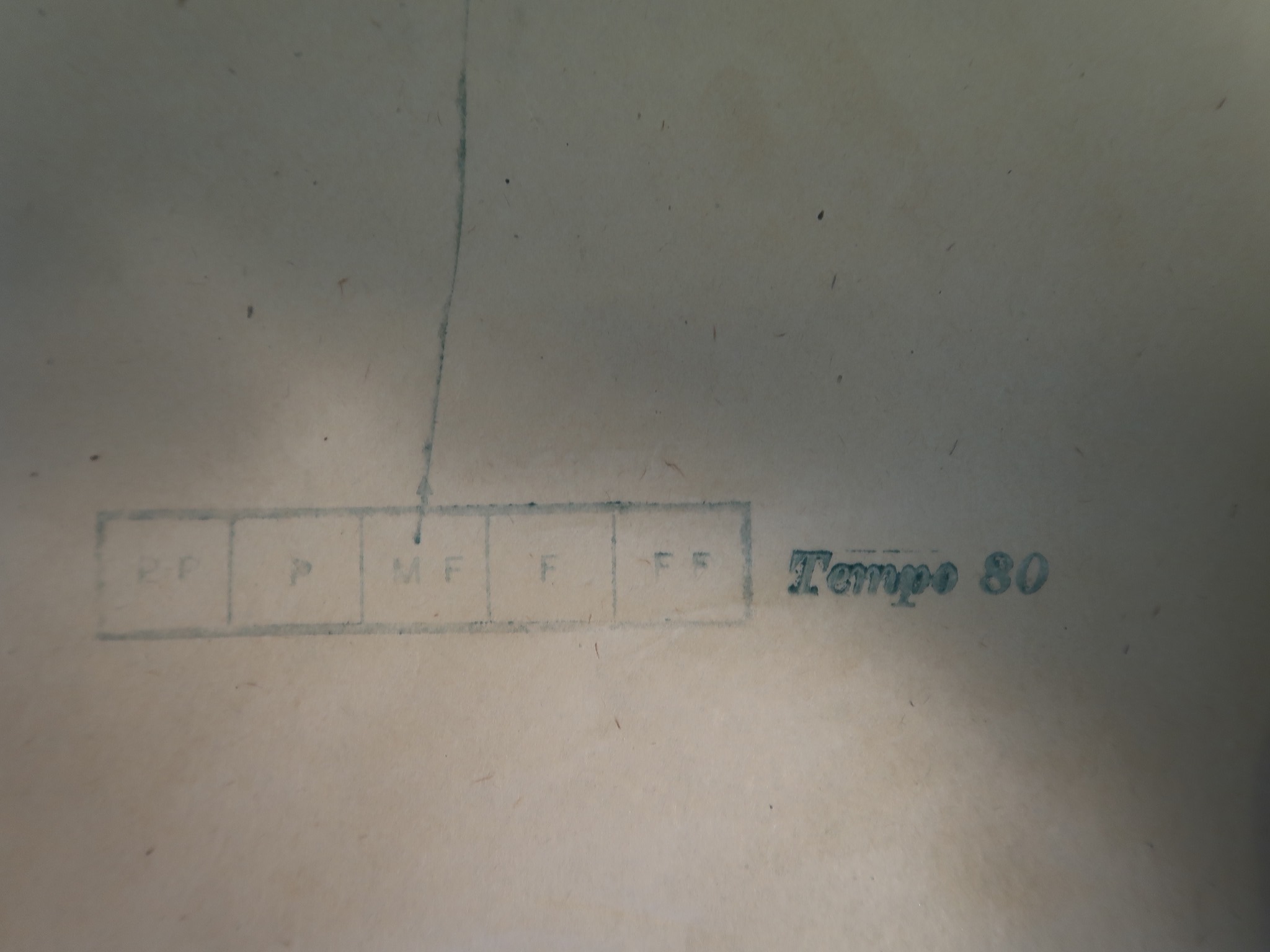
And look at the perforation pattern! Every row is discrete and an easy thing to count:
 perforations.jpg)
So I scanned a tiny bit of that long note there (note that the music is going right to left in that image), and measured as carefully as I could the spacing from row to row over 14 rows. The grid I put on there is 0.1", and you can see that the row spacing is just a hair over 0.1". By the time you get from right to left to 14 rows over, it's about 14.3 X 0.1" = 1.43", which yields an advance of 0.102" per row. This is completely consistent with what I had estimated early this morning from measurements on the BluesTone recut of Artempo 12975, and leads to the conclusion that the Artempo perforator at this time used an advance of just over 100 mils per row. So with only 4 rows per quarter note, nothing approaching a triplet is possible and the resolution is indeed only a sixteenth note!
.jpg)
Now, the waltz is arranged a little differently than the fox-trot, not surprisingly. Look at a little bit where the music is a dotted rhythm, in the last four bars of the first strain, and just count rows. Again, note that the music proceeds right to left in this photo. You can see that the uneven rhythm is: long note 4 rows, short note 2 rows. Then again, then again. So it's 6 rows per quarter note, and a total of 18 rows per measure. This allows triplet swing, so this arrangement is really in 9/8 time. This does not allow division of a quarter note into 4 sixteenths, however. The marked paper speed of 8 feet per minute ("Tempo" 80) thus yields a musical tempo of: 3 beats/measure X 6 rows per beat X 0.102" per row = 1.836" per measure, at the marked paper speed of 8 feet per minute, or 96 inches per minute, so 96 inches/minute divided by 1.836 inches/measure = 52.3 measures per minute, or if you take the waltz in 3 instead of 1, that's 157 quarter notes per minute. If you put this on your metronome and sing the tune along with it, that's a very reasonable tempo for this waltz.
.jpg)
Through the courtesy of a well-known collector and JPJ expert, I had the opportunity to examine an original of the Artempo Carolina Shout and to make measurements to test the hypothesis that it has the same advance as the Artempo Eccentricity Waltz roll. Here is a closeup of a few perforations laid against a ruler:
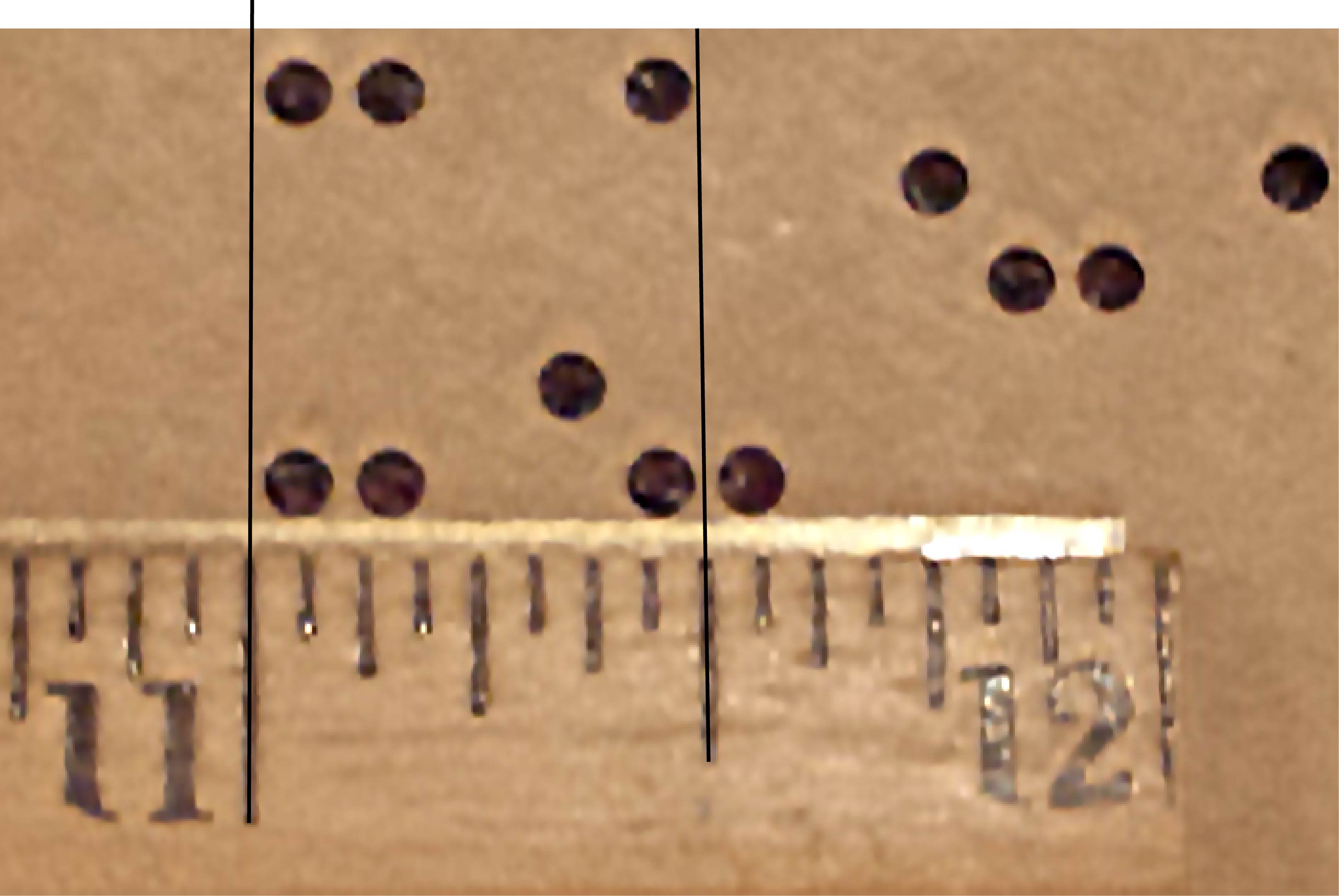
It is easy to judge that the advance is as close to one tenth of an inch per row as can be determined from the examination of just this section. Making measurements in Illustrator on this image also leads to the conclusion that the Artempo perforator was intended to have an advance of 0.1" per row. Thus the conclusions arrived at from the BluesTone recut calibrated against the Eccentricity Waltz original are verified.